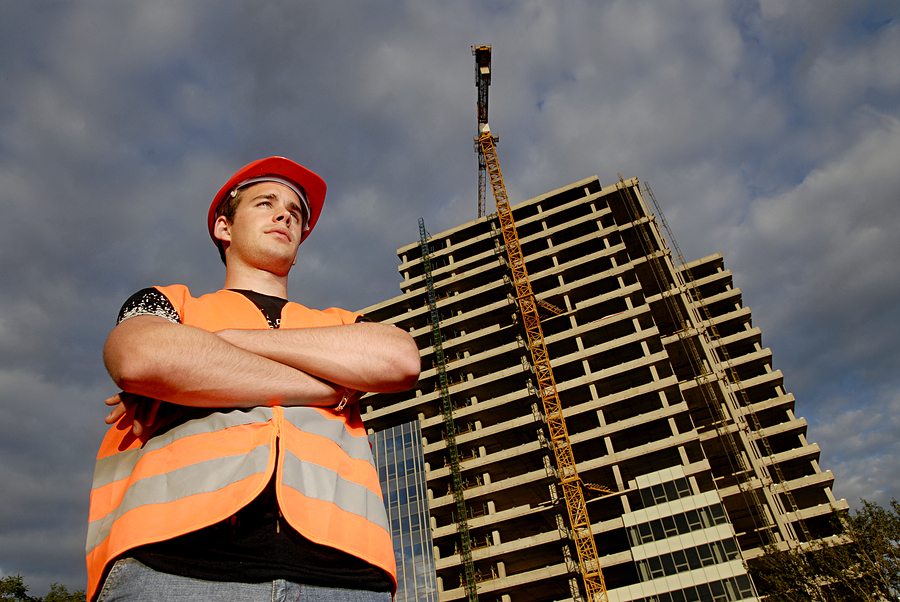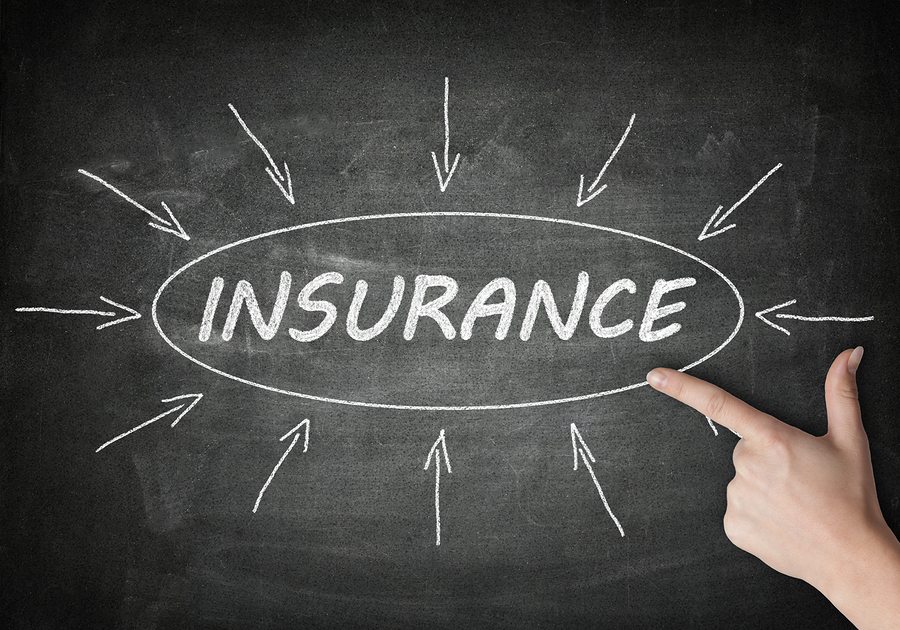by jeffp | Jul 14, 2015 | Construction
 In 1970, the U.S. Congress passed the Occupational Safety and Health Act, creating the Occupational Safety and Health Administration (OSHA), a government entity dedicated to assuring safe working conditions for Americans through standards enforcement, training, outreach, education and assistance. An agency of the United States Department of Labor, OSHA regulations cover most private sector employers in all 50 states, the District of Columbia, and other U.S. jurisdictions.
In 1970, the U.S. Congress passed the Occupational Safety and Health Act, creating the Occupational Safety and Health Administration (OSHA), a government entity dedicated to assuring safe working conditions for Americans through standards enforcement, training, outreach, education and assistance. An agency of the United States Department of Labor, OSHA regulations cover most private sector employers in all 50 states, the District of Columbia, and other U.S. jurisdictions.
Employers who fail to follow OSHA safety and health standards are subject to fines for violations. For this reason, most businesses subject to OSHA oversite are eager to comply with regulations. However, true workplace safety—particularly in the construction industry—is about more than just OSHA compliance. Common safety issues on the construction jobsite often include:
- Hazardous walking surfaces
- Falls from ladders and scaffolds
- Steel erection
- Excavation
- Electrocution
- Inappropriate use of cranes and forklifts
And monetary losses—in addition to citations and fines incurred as the result of an accident or inspection—often include:
- Costs associated with the worker’s injury (immediate and long-term)
- Multi-employer contract liabilities
- Civil lawsuits filed by injured members of the public or other contractor’s employees
- Damage to the construction company’s reputation
The only way to minimize and address all of these issues is a comprehensive jobsite safety process that integrates OSHA regulation compliance with a broader culture of safety supported by all levels of management. You may want to start with the following suggestions.
Create a safety plan specific to each jobsite. While your construction company should have a general safety program in place, modifications specific to each jobsite can make it infinitely more effective. Consider the unique challenges posed by each site as well as the routine tasks workers will be completing. Take weather predictions into account, the experience level of the workers you’re assigning to the jobsite, and any anomalies in architectural or structural engineering designs.
Actively manage all subcontractors. It’s not enough to just worry about “controlling employer” OSHA violations. If you want to create a truly safe jobsite, you need to concern yourself with preventing hazards created by subcontractors as well. You can do this by involving your own safety professionals in their management or contracting with third-party groups who can keep tabs on the condition of the entire jobsite.
Address the root causes of unsafe behavior. For example, proper safety equipment can prevent a fall from height, and failing to wear proper safety equipment can lead to such a fall. But what is the root cause of such unsafe behavior? Dig deeper whenever you find a worker violating a safety guidelines. It could be that fatigue is causing poor judgement and additional mandatory breaks or shorter shifts may be in order. Other common root causes of accidents and injuries include distractions and health-related issues such as depression.
If you’re only concerned with OSHA compliance on your construction jobsite, your safety program will not be as effective at preventing accidents and injuries as it could be. Big picture thinking and planning is necessary, and we’re here to help. Please give us a call whenever you need assistance.
by jeffp | Jun 30, 2015 | Construction

If you’ve been running a construction business for long, you’ve probably been tempted to buy the first professional liability insurance plan your agent offers you—and renew it each year—rather than spend valuable time evaluating your options. After all, you have hundreds of other things to do—and most of them are likely more exciting than evaluating risk and estimating liability. However, having the right coverage in place when challenges arise is necessary if you want to remain solvent and avoid financial ruin.
Before your professional liability policy is up for renewal, we encourage you to consider the following:
No contractor should be without professional liability insurance. It’s your best form of protection from third-party claims of professional negligence due to acts, errors or omissions. Plus, it’s often included as a contractual requirement. Depending on the size and complexity of the project at hand, you may be required to purchase from $1 million to $10 million in professional liability coverage.
It can also protect you from claims related to the mismanagement of subcontractors, errors in your construction methods, inaccurate cost estimates, missing project completion deadlines and more.
If your revenues have decreased, you may still have a rate increase. Professional liability insurance underwriters concentrate on your potential risk of exposure, historical data, claim statistics and annual or projected revenues. Revenue fluctuations are common in the construction injury, but decreases in revenue often result in increases in insurance rate. That said, if your revenues increase, your insurance rate may actually decrease—assuming the rest of your work stays the same, i.e. you aren’t taking on new risks.
Other events may also trigger a rate increase. Material changes in services rendered may increase your exposure risks. Changes in the claims patterns of similar service providers may lead to a rate increase for you as well. And if you’ve made claims of your own in the past, including the previous policy term, they will be taken into consideration.
Fortunately, there are ways to keep rates lower. Taking on lower-risk projects can reduce your rates. Other ways to mitigate your risk exposure—and subsequently reduce the cost of your professional liability insurance policy—include employing a risk manager, employing a risk management firm, preparing a quality control manual and updating it annually, including “limitation of liability” provisions in your project contracts, having certified legal counsel review your contracts, and using subcontractors who have their own adequate levels of professional liability insurance.
Whether you’re purchasing professional liability insurance coverage for the first time or planning to renew a current policy, contact us today for further insight and the answers to all your construction risk management and insurance questions.
by jeffp | Jun 11, 2015 | Construction

Globally, the construction industry is recognized as one of the most hazardous work environments. You may have the best jobsite safety program in the world, but without the commitment of your workers, it’s little more than words on paper—and words alone can do little to prevent accidents and injuries. Consider the following simple ways to improve your team’s safety attitude today.
Talk about safety every day. The more you reiterate the importance of safety and encourage your team—from entry-level workers to management—to discuss it, the more invested they will become in keeping your jobsite safe. You might do this by starting the workday with a brief safety review meeting or quizzing your workers on safety issues as you tour the jobsite.
Encourage safety suggestions. No one knows the jobsite better than the workers who spend their days there. Encourage them to report potential issues and recommend ways to make their jobs—and the jobsite—safer. You might do this by creating a reward program for workers who proactively implement improvements or eliminate safety risks.
Take safety actions promptly. You want your employees to care about safety, so show them it’s your top priority as well. Whenever they notify you about hazards, act promptly to correct the issue. This goes for minor safety problems as well as larger, more dangerous ones. Never ignore their reports, even if remedying the situation will put you behind schedule or otherwise disrupt work on the jobsite.
Invest in safety training. Sure, training new construction workers on jobsite safety—and periodically re-training old ones—takes time that could be spent on actual work. However, well-trained employees are more than worth it: they’ll have good safety attitudes, make safety a priority, and ultimately help you avoid expensive jobsite accidents and injuries.
Reward safe workers. While you should always be on the lookout for workers who are violating jobsite safety rules, it’s equally important to catch them in the act of following the program. Praise safe performance of duties frequently and loudly. Make safety a key component of annual performance appraisals, and consider tying jobsite safety compliance into raise and promotion decisions.
Set a positive example. Make sure your jobsite managers always set positive safety examples—both in actions and attitudes—for the rest of your workers. Workers will emulate the behavior of their supervisors, safe or otherwise.
The success of your construction company depends directly on the attitudes of your employees towards their own safety and that of their coworkers. We hope these suggestions help you make meaningful improvements in that regard. Please don’t hesitate to contact us for a jobsite safety program review or additional assistance.
by jeffp | May 28, 2015 | Construction

Whether you’re starting a new construction business or have been working in the industry for decades, learning more about preventing jobsite injuries and maintaining Occupational Safety and Health Act compliance is now easier than ever. The Compliance Assistance Quick Start tool at www.osha.gov will walk you through major OSHA requirements for employers in the construction industry. The topics covered include the following:
Step 1– OSHA requirements relating to leading hazards on construction sites. These include falls (which account for the greatest number of fatalities in the industry), stairways and ladders, scaffolding, electrical, trenching and excavation, motor vehicle safety and highway work zones.
Step 2 – Other OSHA requirements that may apply to your jobsite. These include personal protective equipment; hand and power tools; concrete and masonry products; cranes, derricks, hoists, elevators and conveyors; welding, cutting and brazing; residential construction; steel erection; fire safety and emergency action planning; and hazard communication standards.
Step 3 – Surveying your jobsite for other hazards. In this step, you’ll learn how to use construction safety checklists and review OSHA’s health and safety bulletins. In addition, you can find information on asbestos, asphalt fumes, carbon monoxide, distracted driving, hazardous and toxic substances, heat, lasers, lead, occupational noise, silica and toxic metals.
Step 4 – Developing a jobsite safety and health program. OSHA requires construction employers to put accident prevention programs in place, including frequent inspection of jobsites, materials and equipment by qualified professionals. This step will link you to online OSHA resources that can help.
Step 5 – Training your employees. Resources include specific OSHA construction training standards, the training and reference materials library, OSHA videos on reducing construction hazards, and general safety and training requirements.
Step 6 – Recordkeeping, reporting and posting. If you have more than 10 employees, you’re required to keep records of jobsite illnesses and accidents. At this step, you can review brochures on recordkeeping and associated regulations. You will also learn about posting OSHA posters, reporting work-related deaths and hospitalizations, and maintaining employee exposure and medical records.
Step 7 – Additional compliance assistance information. From OSHA resources for smaller employers to voluntary programs and Spanish-language resources, the final step in the Compliance Assistance Quick Start tool provides links to other resources construction business owners should find helpful in understanding OSHA requirements.
While it is definitely helpful as an overview, keep in mind the Compliance Assistance Quick Start tool is not comprehensive. It’s intended to provide initial guidance materials, not replace the in-detail assistance you can receive from a free on-site consultation with a compliance assistance specialist through the OSHA On-Site Consultation Program.
by jeffp | May 13, 2015 | Construction
 For those who are interested in becoming green general contractors, it is important to follow the right steps to become certified. Since every contractor must have a state-issued license, individuals should contact their state’s contractor licensing division. People who do not yet have their licenses can review specific state guidelines by visiting the NASCLA’s site at www.nascla.org.
For those who are interested in becoming green general contractors, it is important to follow the right steps to become certified. Since every contractor must have a state-issued license, individuals should contact their state’s contractor licensing division. People who do not yet have their licenses can review specific state guidelines by visiting the NASCLA’s site at www.nascla.org.
The next step is to satisfy all state requirements. In some states, a bachelor’s degree is required in order to receive a license. While some states do not have this requirement in place, it is still helpful for individuals to have four-year degrees in order to make themselves more marketable. Contractors usually have degrees in physics, engineering, math or similar areas. Some states may also require applicants to have several years of practical work experience. This means people who have worked for several years as construction workers, carpenters or in other positions may apply in some states. After satisfying all state requirements, applicants must take and pass the state test.
Green Building License
Contractors who are interested in green certification should spend some time familiarizing themselves with national accreditation options. In order to become certified, training in one of the national accreditation programs is required. BPI (Building Performance Institute) and LEED (Leadership in Energy and Environmental Design) are the most popular choices. The extra training helps contractors learn about state funding incentives for homes and businesses using green improvements. Programs are designed to give contractors a broad knowledge base of various tasks. However, some programs focus mainly on one or more areas.
After choosing a training program and completing it, contractors must take BPI or LEED exams. Some contractors may take several courses. There is no right or wrong choice, so contractors should pick one or more areas that interest them or relate to their type of business. It is also important to consider local needs. For example, solar power may be more popular in the Southwest than it is in the Northwest. Some common specialization choices include retrofit or rehabilitation, energy audits, lighting systems, solar or photovoltaic panel installation, heating systems and cooling systems.
After completing a course and taking the related exam, it is important to research what kind of continuing education is required. Continuing education is necessary for retaining a green certification. Once the training and tests have been completed, contractors should begin looking for suppliers of green materials. The key to finding such suppliers is to look locally or nearby. Importing materials uses natural resources, which can be counterproductive to the cause of going green. Look for recycled materials and items that are made with non-toxic paint.
The last step is advertising and finding clients. Advertising with the local chamber of commerce is a good way to start. Contractors may also check with the U.S. Green Building Council to advertise with a local chapter. For more information about green certification and insurance, discuss concerns with an agent.
by jeffp | Apr 28, 2015 | Construction

Developed in 1998 by the U.S. Green Building Council, the Leadership in Energy and Environmental Design (LEED) Green Building Rating System established standards for the design, construction and operation of new and renovated green buildings. Since then the popularity of environmentally friendly design has skyrocketed. According to McGraw-Hill Construction’s 2013 Dodge Construction Green Outlook report, analysts expect the value of commercial and residential green building to reach $106 billion, a substantial increase from $10 billion in 2005.
By 2016, they expect green building will account for 55 percent of all commercial and institutional construction projects as well as 38 percent of single-family residential construction. Of course, as the demand for green building increases, the risks associated with constructing LEED certified structures will continue to evolve. Consider the following issues for which you may not have adequate coverage under a traditional insurance policy.
Construction Defect Issues
LEED certified buildings often use new techniques and systems to achieve their green status. Features like wind turbines, fuel cells and vegetative roofs are so new that they are still relatively unproven. This means you’re facing unknown potential construction defect risks.
Performance Issues
If you promise a client that the construction project you’re working on will meet LEED standards or attain a certain LEED certification level (ranging from certified to platinum), you could be liable if the finished building does not deliver on that promise.
Recertification
Should your construction project incur a loss—due to fire, wind, theft or vandalism, for example—you will need to have it recertified. This can be quite expensive.
Restoration
The cost of restoring LEED buildings is more expensive than that of regular construction. For example, a traditional property insurance policy will cover the cost of rebuilding a structure using traditional construction methods. In the case of a LEED certified building, many of the materials and techniques used are more costly and may not be covered.
With an ever-increasing focus on energy efficiency and environmentally friendly materials, it is likely green building is more than a passing trend. Talk to your commercial property specialist about “green insurance” and appropriate riders to ensure your LEED certified construction projects have adequate protection.
 In 1970, the U.S. Congress passed the Occupational Safety and Health Act, creating the Occupational Safety and Health Administration (OSHA), a government entity dedicated to assuring safe working conditions for Americans through standards enforcement, training, outreach, education and assistance. An agency of the United States Department of Labor, OSHA regulations cover most private sector employers in all 50 states, the District of Columbia, and other U.S. jurisdictions.
In 1970, the U.S. Congress passed the Occupational Safety and Health Act, creating the Occupational Safety and Health Administration (OSHA), a government entity dedicated to assuring safe working conditions for Americans through standards enforcement, training, outreach, education and assistance. An agency of the United States Department of Labor, OSHA regulations cover most private sector employers in all 50 states, the District of Columbia, and other U.S. jurisdictions.






